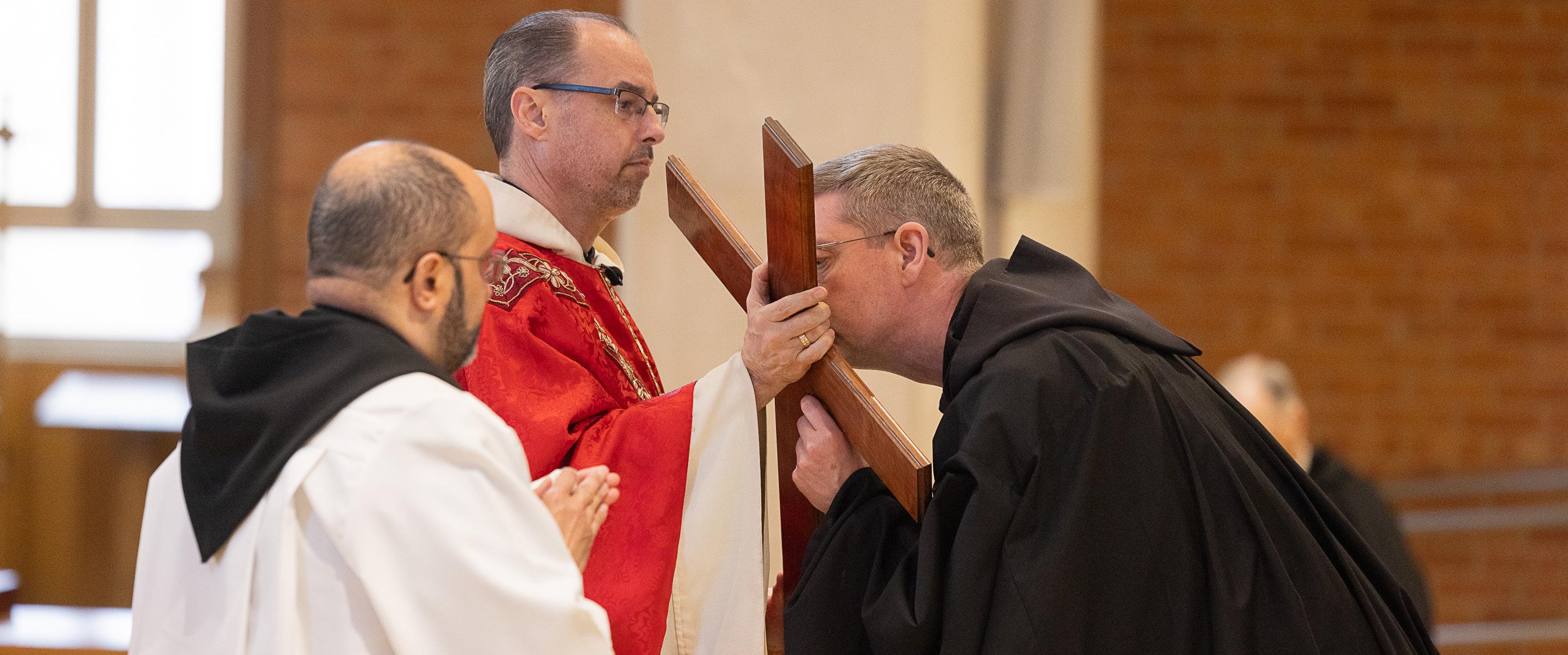

kansas monks
april 2025
Dear Friends in Christ,
This year, we celebrate Easter Sunday, the holiest day of the year, on April 20th. As we prepare to enter fully into the Paschal Mystery—Christ’s suffering, death, and resurrection—I cannot help but call to mind the sufferings of our Holy Father, Pope Francis. As I write, he has remained in the hospital for more than a month, and there is uncertainty about whether he will be able to lead the Holy Week liturgies or celebrate Easter Mass publicly. I ask you to join us in praying for his strength and healing, entrusting him to the mercy of God.
With this in mind, we are reprinting a portion of Pope Francis’ Easter Urbi et Orbi message from last Easter. His reflections on the dignity of human life, particularly among the many conflicts raging in our world, remain as urgent today as they were then.
The Holy Father has repeatedly warned against a “throwaway culture”—one that treats life as disposable, valued only for economic or political gain, or even mere convenience. This theme of dignity and justice is deeply relevant to our world today. In this edition, Fr. Matthew also shares an article on the moral concerns of in-vitro fertilization (IVF), exploring how modern reproductive technologies challenge our understanding of life’s sacredness. And in our article on the next page, Oblate Reid Bissen offers reflections on “Communion” from The Art of Living, a meditation on the importance of living in relation to others in light of the Gospel.
At a time when war and social conflict continue to plague our society, we must not lose sight of the deeper cultural battles being waged against human dignity. Yet, the Easter message is one of hope, renewal, and victory in Christ. May the peace and grace of the Risen Lord fill your hearts this season.
In Christ,
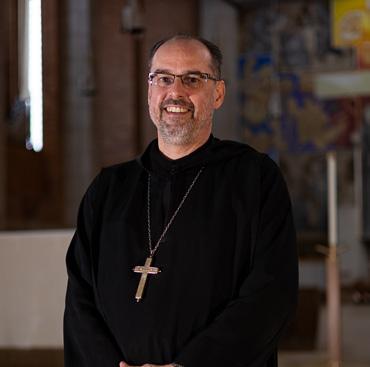

IN THIS ISSUE
Feature | Urbi et Orbi 2024
An Easter message from Pope Francis Up Next | Communion
From The Art of Living, Part VI of IX
Abbot James R. Albers, O.S.B
The Art of Living: Communion
Part VI of IX of a series of reflections on The Art of Living by Dietrich von Hildebrand.
By Reid Bissen, Obl.S.B.
Very fittingly, at this point in The Art of Living, Alice von Hildebrand continues in her late husband’s place in proposing to us communion as the next fundamental attitude to living well as Christians. Communion is a lived connection of all of life’s events with another person. It is victory over isolation.
Man is destined for communion. This is because man is first and foremost a person, who refers to himself as an “I” and stands among other “I”s that are understood to be “you”s, The field of humanity is interpersonal, which opens the possibility of two or more “I”s becoming a “we”. To become part of a “we” is the destiny of a person because he becomes something more than himself while still remaining an individual “I”. There is no other substantial development for an “I” apart from ceasing to exist. A person cannot become anything more than an “I” except a “we”, so therefore we speak of communion as the destiny of man.
One barrier to realizing communion is isolation. Ironically, true communion is hard to come by in our age of constant communication. This isn’t to say that digital communication is inherently bad, but its benefits come at a cost. There are things said over text that have gravity unfitting for the way they are communicated. The words “I love you” spelled out on a screen do not communicate the same meaning as those same words spoken out loud, with inflection, facial expression, and volume. Even video calls subtract the meaning that physical presence supplies to the spoken word. It’s okay to tell your loved ones that you care for them over the phone- the point is that if someone were to only, or predominantly, be told that they are loved via text, they wouldn’t know what love is. An imbalance in the way we communicate is a barrier to communion. One way we can practice this is by saving important conversations for face-to-face
encounters. Getting to know someone new is also best done in person. This will require patience from us, but the good of a deeper communion is worthwhile.
However, communion is not guaranteed by physical presence. We should be careful not to become complacent in our striving for communion with those who we spend significant time with. It is easy to take for granted the communion we have with God and others, and slowly retract our commitment to being a “we”, and eventually find ourselves two free-floating “I”s that happen to inhabit in the same house, workplace, convent, or in relation to God, the same soul.
If we do not safeguard the communion in our lives, it may unravel into a chilling isolation. A habitual reverence for others is the salt that preserves the authenticity of communion.
If we do not safeguard the communion in our lives, it may unravel into a chilling isolation. A habitual reverence for others is the salt that preserves the authenticity of communion.
This means not treating others as problems that can be ‘taken care of’, obstacles to getting what I want or what I think is best. “If I can only exert a certain amount of influence over them, then they’ll finally agree to giving me what I want”. It also means not treating others as means to an end, tools. It is a remembrance that every person is an “I” just like I am. It looks like treating others as you might hold a precious stone, or standing before them as you might before a mountaintop view.
Choosing not to define people by their role in society will protect communion by giving priority to personhood, which is deserving of reverence. I am a person before I am a cashier at a gas station. I am a person before I am a business owner. I am a person before I am a teacher. Defining others by their role in society leads us to do the same to ourselves, which will lead us on a self-destructive quest to prove our worth within the work we do. Our being made in the image and likeness of God is what makes us persons, it is where our worth comes from, not anything I can produce.
Sometime fear of disillusionment prevents us from aspiring to communion with others. There is a risk in making the move from “I” to “we”, but we must realize that what we potentially lose in reaching out will always be of a lesser order of value than what is to be gained from authentic communion. The growth in virtue that springs naturally from our living in communion with others will always outrank in value whatever we lose in having our (often unrealistic) expectations disappointed.
Finally, we must learn how to stand before others when faced with their imperfections, and our own. When temptations to withdraw ourselves from openness to communion with others strike out at us, our parry is faith and hope. Faith to believe that there is something worthy of reverence in this person, no matter what they’ve done or are currently doing; and hope to acknowledge that everyone has the capacity to become what they are called to. So, if this reverence is not forthcoming, we ought to make an act of faith in the image of God in the person in front of us, and an act of hope that they can manifest character that helps that image shine forth from their soul. Having faith in others’ inherent goodness may even spark in them the desire to aspire towards greater moral virtue. Being patient in our hope will show others that we do love them and not just themas-we-want-them-to-be. Love does not need to be blind to another’s imperfections – it can bear seeing them so long as it also sees the distinct beauty of the person.
TABLE OF CONTENTS
Read Pope Francis’s words “to the City (of Rome) and to the World” from his 2024 Easter address.
Fr. Matthew explains the moral theology behind the Church’s opposition to the artificial creation of life as a treatment for infertility.
Reflect on the readings for this month’s Sunday and Holy Day Masses. In March, we focus Lent and the patron of the universal church, St. Joseph.
The mission of St. Benedict’s Abbey is to glorify God by seeking him through joyful self-sacrifice, by embracing fully the monastic and apostolic ideals, and by leading others to encounter Jesus Christ, who brings us all together to eternal life.
The Kansas Monks newsletter is a monthly publication of the monastic community of St. Benedict’s Abbey to help fulfill this mission.
Read our archives at www�kansasmonks �org/newsletter
Our earthly and eternal happiness depend on following our vocation without faltering.
saint gianna beretta molla
Urbi et Orbi
The Holy Father’s Easter Message from 2024
Delivered on Sunday, March 31st, 2024 from the balcony of St. Peter’s Basilica, His Holiness Pope Francis’s Easter blessing and address linked the saving power of Christ’s resurrection with a call for transformation of the world’s conflicts.
Dear brothers and sisters, Happy Easter!
Today throughout the world there resounds the message proclaimed two thousand years ago from Jerusalem: “Jesus of Nazareth, who was crucified, has been raised!” (Mk 16:6).
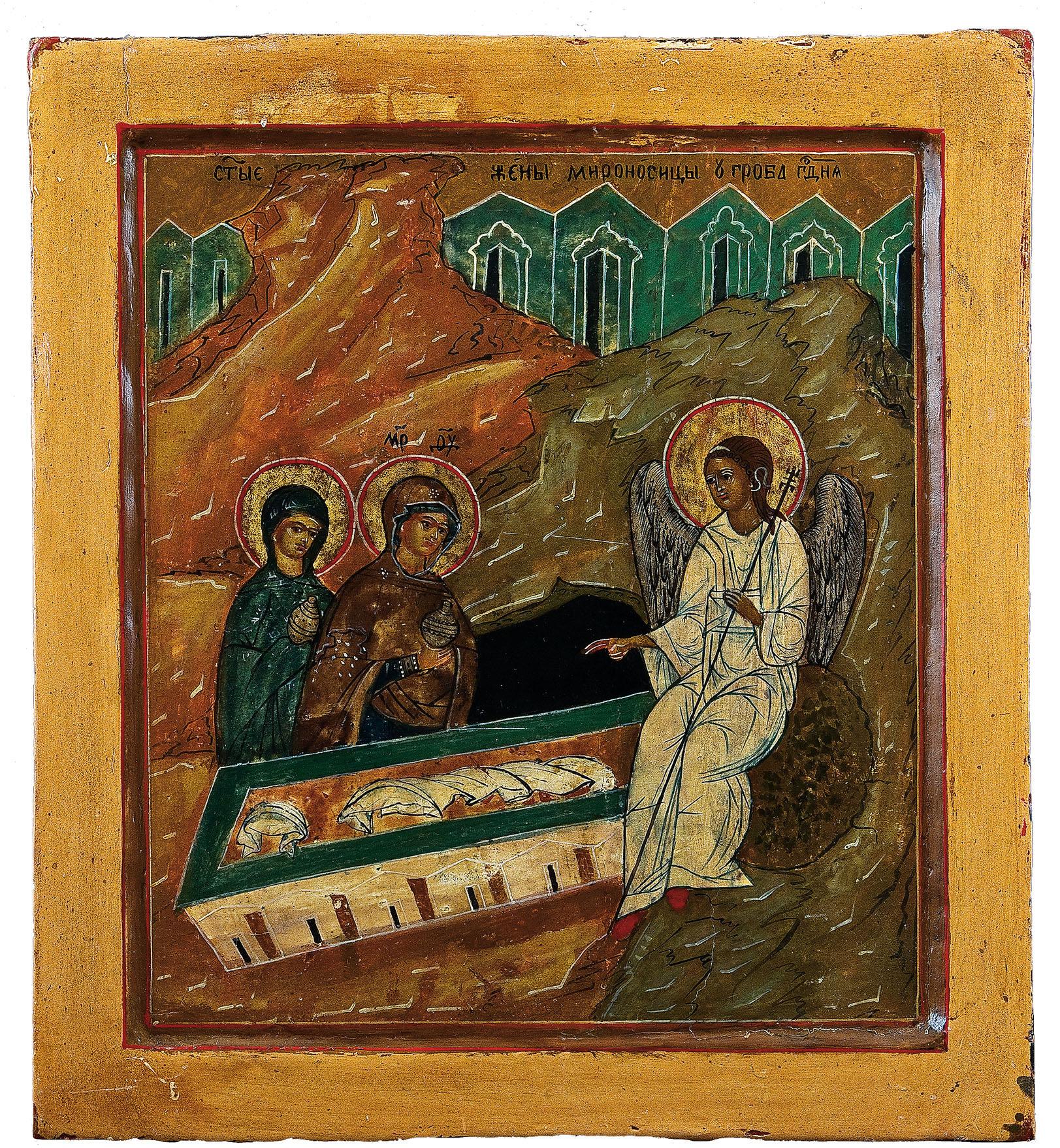
The Church relives the amazement of the women who went to the tomb at dawn on the first day of the week. The tomb of Jesus had been sealed with a great stone. Today too, great stones, heavy stones, block the hopes of humanity: the stone of war, the stone of humanitarian crises, the stone of human rights violations, the stone of human trafficking, and other stones as well. Like the women disciples of Jesus, we ask one another: “Who will roll away the stone for us from the entrance to the tomb?” (cf. Mk 16:3).
This is the amazing discovery of that Easter morning: the stone, the immense stone, was rolled away. The astonishment of the women is our astonishment as well: the tomb of Jesus is open and it is empty! From this, everything begins anew! A new path leads through that empty tomb: the path that none of us, but God alone, could open: the path of life in the midst of death, the path of peace in the midst of war, the path of
Icon of Women at the Grave. 17th century.
reconciliation in the midst of hatred, the path of fraternity in the midst of hostility.
Brothers and sisters, Jesus Christ is risen! He alone has the power to roll away the stones that block the path to life. He, the living One, is himself that path.
Brothers and sisters, Jesus Christ is risen! He alone has the power to roll away the stones that block the path to life. He, the living One, is himself that path.
He is the Way: the way that leads to life, the way of peace, reconciliation and fraternity. He opens that path, humanly impossible, because he alone takes away the sin of the world and forgives us our sins. For without God’s forgiveness, that stone cannot be removed. Without the forgiveness of sins, there is no overcoming the barriers of prejudice, mutual recrimination, the presumption that we are always right and others wrong. Only the risen Christ, by granting us the forgiveness of our sins, opens the way for a renewed world.
Jesus alone opens up before us the doors of life, those doors that continually we shut with the wars spreading throughout the world. Today we want, first and foremost, to turn our eyes to the Holy City of Jerusalem, that witnessed the mystery of the Passion, Death and Resurrection of Jesus, and to all the Christian communities of the Holy Land.
[Here, the Holy Father calls for peace in war-torn regions, especially Israel and Palestine and in Ukraine, urging respect for international law and a prisoner exchange. He pleads for humanitarian aid in Gaza, an end to hostilities, and protection for children suffering in conflict. He warns against escalating tensions in Europe and the Mediterranean, emphasizing that peace comes through dialogue, not weapons.
Pope Francis also highlights crises in Syria, Lebanon, and the Western Balkans, encouraging reconciliation and stability. He urges Armenia and Azerbaijan to pursue peace and calls for relief for Haiti, Myanmar’s Rohingya, and suffering migrants worldwide. Turning to
Africa, he prays for those facing violence and famine in Sudan, the Sahel, the Congo, and Mozambique. He condemns terrorism and calls for urgent action on climate change. Through it all, he invokes the hope of Easter, praying for unity and compassion across the world.]
May Christ guide all persons of good will to unite themselves in solidarity, in order to address together the many challenges which loom over the poorest families in their search for a better life and happiness.
On this day when we celebrate the life given us in the resurrection of the Son, let us remember the infinite love of God for each of us: a love that overcomes every limit and every weakness. And yet how much the precious gift of life is despised! How many children cannot even be born? How many die of hunger and are deprived of essential care or are victims of abuse and violence? How many lives are made objects of trafficking for the increasing commerce in human beings?
Brothers and sisters, on the day when Christ has set us free from the slavery of death, I appeal to all who have political responsibilities to spare no efforts in combatting the scourge of human trafficking, by working tirelessly to dismantle the networks of exploitation and to bring freedom to those who are their victims. May the Lord comfort their families, above all those who anxiously await news of their loved ones, and ensure them comfort and hope.
May the light of the resurrection illumine our minds and convert our hearts, and make us aware of the value of every human life, which must be welcomed, protected and loved. A happy Easter to all!
This address was abridged for reasons of length; we encourage you to read the full address at www.kansasmonks.org/urbi-et-orbi-24
Cherish the Gift of Life
Moral Teachings on Reproductive Technologies
First written in 2012, this article about in vitro fertilization has been revised with a few key updates. It remains timely and relevant to today’s discussions about expanding access to IVF and how the countless lives created.
By Fr. Matthew Habiger, O.S.B.
Several people recently have asked me what is so wrong with in vitro fertilization and embryo transfer (IVF and ET). Couples with infertility problems naturally want to have children. We have the technology to create human life in a laboratory (combining human sperm and ovum in a Petri dish) and then to transfer the embryo into the woman’s uterus. “So why not use it?” they ask.
This question forces us to probe more deeply into God’s plan for creating a new, and unrepeatable, human person. Science and technology can perform various procedures, but they have no sense of value or morality. We have the hydrogen bomb. But should we ever unleash its horrendously destructive power? We see this moral confusion in hospitals where, in the same complex of buildings, there is a nursery to care for newborns, an abortuary where babies are mercilessly killed, and labs using artificial means to overcome infertility. The operative principle here is “The customer is always right. Give them whatever they can pay for.” The prevailing attitude today is that if we can do something, then we have a compelling right to do it.
There are various layers to the answer. We begin with several more easily understood reasons why IVF and ET are totally immoral. We are speaking here of homologous artificial conception (involving only a husband and wife) and not heterologous conception (involving a third party sperm or egg donor).
Sperm is usually procured by an act of masturbation. This could be surmounted by the retrieval of sperm from a perforated condom, after a normal marital act.
The woman is hyper-ovulated. Drugs stimulate
her ovaries to produce ten, or more, ova. Then many embryos are formed by a technician, who combines sperm with ovum in a Petri dish. Surplus human embryos are stored in a refrigerated tank, in case the first attempt to implant embryos in the woman’s uterus fails. If the frozen embryos are not wanted, then eventually they are destroyed. In the USA today there are over 1,000,000 frozen human embryos in storage tanks. Each of these embryos is a human person at his or
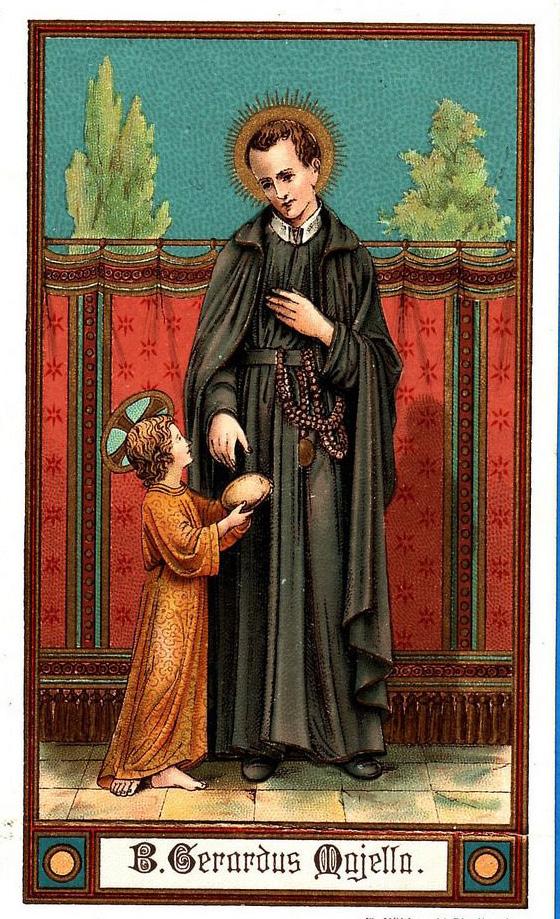
Saint Gerard of Majella is a patron saint for motherhood, those trying to conceive, expectant mothers, childbirth, young or unborn children, and the pro-life movement.
her earliest stage of bodily life. This is an example of technology run amok. Today many of these human embryos are used as Guinea pigs for stem cells or various experiments.
Usually several embryos are placed in a woman’s uterus, just in case some do not implant successfully in her endometrium, the lining of her womb. Sometimes all the embryos implant and thrive. Then the question arises whether to carry all of them to term. If the decision is “No,” then there is a search and destroy mission to eliminate the unwanted human embryos. There is no greater example of reducing a human life to a mere commodity than this.
A human embryonic person has been reduced to a mere object, over which his or her parents and medical technicians claim to have total control. This ignores the huge difference between an animal and a human person. We can validly do things to animals (such as animal husbandry) that we should never do to a person, endowed with a God-given human dignity. Yes, we are members of the animal kingdom, but we are animals of a very special kind. Animals die and that is the end of the story. Every human person has an immortal destiny, called by God to share in His own interpersonal communion of love, life, beauty, truth and goodness. An unborn baby, as well as a human embryo, has the same God-given human dignity as you or I.
Widespread abortion has calloused the general public’s attitude towards the unborn baby. This same callousness now extends to the process of conception. People claim the “right” to destroy, or manufacture, human life. These alleged “rights” are groundless, and are destroying the fabric of a society where people instinctively treasure the gift of human life.
Now we move into more complex and profound reasons for the immorality of IVF and ET. They require some reflection and analysis. The best articulation of these reasons is given in the Vatican document Donum Vitae. The Congregation for the Doctrine of the Faith issued this document in 1987 as the “Instruction on Respect for Human Life in Its Origin and on the Dignity of Procreation.” Cardinal Joseph Ratzinger (later Pope Benedict XVI) was the Prefect of the Congregation at that time.
I shall simplify the document’s moral argument. God designed our human nature, as bodied persons, male and female, sexual and fertile. We are a composite of a spiritual soul and a physical body. He has a plan for marriage, for spousal love and for the family.
God designed our human nature, as bodied persons, male and female, sexual and fertile. We are a composite of a spiritual soul and a physical body. He has a plan for marriage, for spousal love and for the family.
Every marital act is to be open to the goodness of love (the unitive dimension) and to the goodness of life (the procreative aspect). Only in the context of an act of spousal love is a new human person to be conceived. A child has a right to be conceived by an act of love between his/her mother and father, who will then provide a loving home for the rearing of that child. This alone does justice to all the various goods and values involved in the procreation of a new human person.
Here is one short quotation. “… The procreation of a person must be the fruit and the result of married love. The origin of the human being thus follows from a procreation that is ‘linked to the union, not only biological but also spiritual, of the parents, made one by the bond of marriage.’ Fertilization achieved outside the bodies of the couple remains by this very fact deprived of the meanings and the values which are expressed in the language of the body and in the union of human persons.”
There is a morally good use of medical technology in overcoming infertility. “Homologous artificial insemination within marriage cannot be admitted except for those cases in which the technical means is not a substitute for the conjugal act, but serves to facilitate and to help so that the act attains its natural purpose.”
Article continues on page 11 >>
Living the Liturgy
Commentary on the Liturgical Year
Reflect on the readings for this month’s Sunday and Holy Day Masses. In March, we focus on Lent and the patron of the universal church, St. Joseph.
By Tom Hoopes
April is my favorite month, not only because my wife’s name is April, but probably mostly because my wife’s name is April. Her name day is April 1, a day when she goes all out on April Fool’s Day pranks — but for most of us, our name day is the day dedicated to the saint we are named for.
And April has a lot of our friends’ name days in it, including Richard, Julie, Martin, Catherine, Mark and James. We don’t know a Lidwina, Radbertus or an Anselm, but their name days are in April, too.
We celebrate our name days because names are so important. “The name is the icon of the person,” as the Catechism puts it. To see how true that is, bring up someone’s name with mutual friends. If the person you name is funny, everyone will laugh as if the person were there. If you bring up the name of someone who hurt the people present, everyone will scowl. Saying their name seems to bring something of the person into the room.
That is because of the many ways your name carries your personal identity. It tells people what family you are from and, often, what faith you belong to. This is why marriage typically involves name changes. In fact, many men will say that their wife’s decision to take their name is what most woke them up to how serious their married relationship truly is.
Names are even more important in a Christian context. “Everyone’s name is sacred,” says the Catechism, and, as Pope Francis beautifully put it, “God allows parents to choose the name by which he himself will call their child for all eternity.” Whether you are named for a saint or not, God will call you by your name to show how well he knows you and how much he loves you. In St. Benedict’s Abbey, monks take a new name when they enter the novitiate, and monks have told me that they practically consider their old name a different person.
Popes choose a new name in part to clearly separate their papal self from their old self. But recent popes have loved name days. St. John Paul II, whose baptismal name Karol is the Polish form of Charles, used to give Vatican workers the day off on the feast of St. Charles Borromeo. In 2021, Pope Francis celebrated his name day, April 23’s memorial of St. George, by making a surprise visit to 600 homeless people in Rome.
Go and do likewise. On your family name days, get a special treat for the saint’s namesake, and on your own namesake, do an act of mercy, giving away money or clothing.
Lent’s Finish Line Approaches: Go, and Change
April 6 | Fifth Sunday of Lent, Year C
The centerpiece of this Sunday’s Gospel is the story of the woman caught in adultery, and the last line may be the most important: “Neither do I condemn you. Go, and from now on do not sin any more.”
Today’s readings have a lot to say about both halves of that statement: “Go” — move forward; and “do not sin anymore” — change your life. In the First Reading, Isaiah explains one way to change —“Remember not the events of the past, the things of long ago consider not.” It also describes how to go: “See, I am doing something new! Now it springs
forth, do you not perceive it? In the desert I make a way, in the wasteland, rivers.”
St. Paul echoes the message. First, he renounces his past priorities, saying, “I consider everything as a loss because of the supreme good of knowing Christ Jesus my Lord.” Then, he calls us to go forward, “Forgetting what lies behind, but straining forward to what lies ahead, I continue my pursuit toward the goal, the prize of God’s upward calling, in Christ Jesus.”
It’s a fitting message as the days of repentance wane and the new life of Easter looms ahead.
The Two Keys to the Christian Life
April 13 | Palm Sunday of the Lord’s Passion
Today’s Second Reading gives the two keys to the Christian life: Humility and obedience. It describes how Jesus, though God, “humbled himself, becoming obedient to the point of death, even death on a cross.” Then, the passion story that we hear shows the stark difference between the humble way of Jesus, who was God, and the apostles, who were sinners.
While they argue who is the greatest, Jesus takes the form of bread. As they loudly proclaim that their
fidelity, then flee, Jesus goes to his death refusing to defend himself. They disobey his simple request to stay awake even while Jesus prays to his Father, “Not my will, but yours”.
There are so many examples: Jesus carries a cross, Peter brandishes a sword; Jesus counsels the women he meets, Peter betrays Jesus to the women he meets. This is awe-inspiring humility and obedience, and it’s what we need most: Humility that puts God first, others second, and self third; and obedience that lets go of our plan for his.
Holy Thursday, Feast of Love April 17 | Holy Thursday
The washing of the feet in the Gospel of John takes center stage at Mass tonight, and it might seem odd that on the night of the Institution of the Eucharist, we read the one Holy Thursday Gospel that doesn’t mention the Eucharist. But there are two good reasons for this. First, because the earliest, and most familiar, account of the Eucharist is read this day in the Second Reading from St. Paul. Second, because the readings want to say, as insistently as possible, that the reason for the Eucharist and the chief fruit of the Eucharist is love.
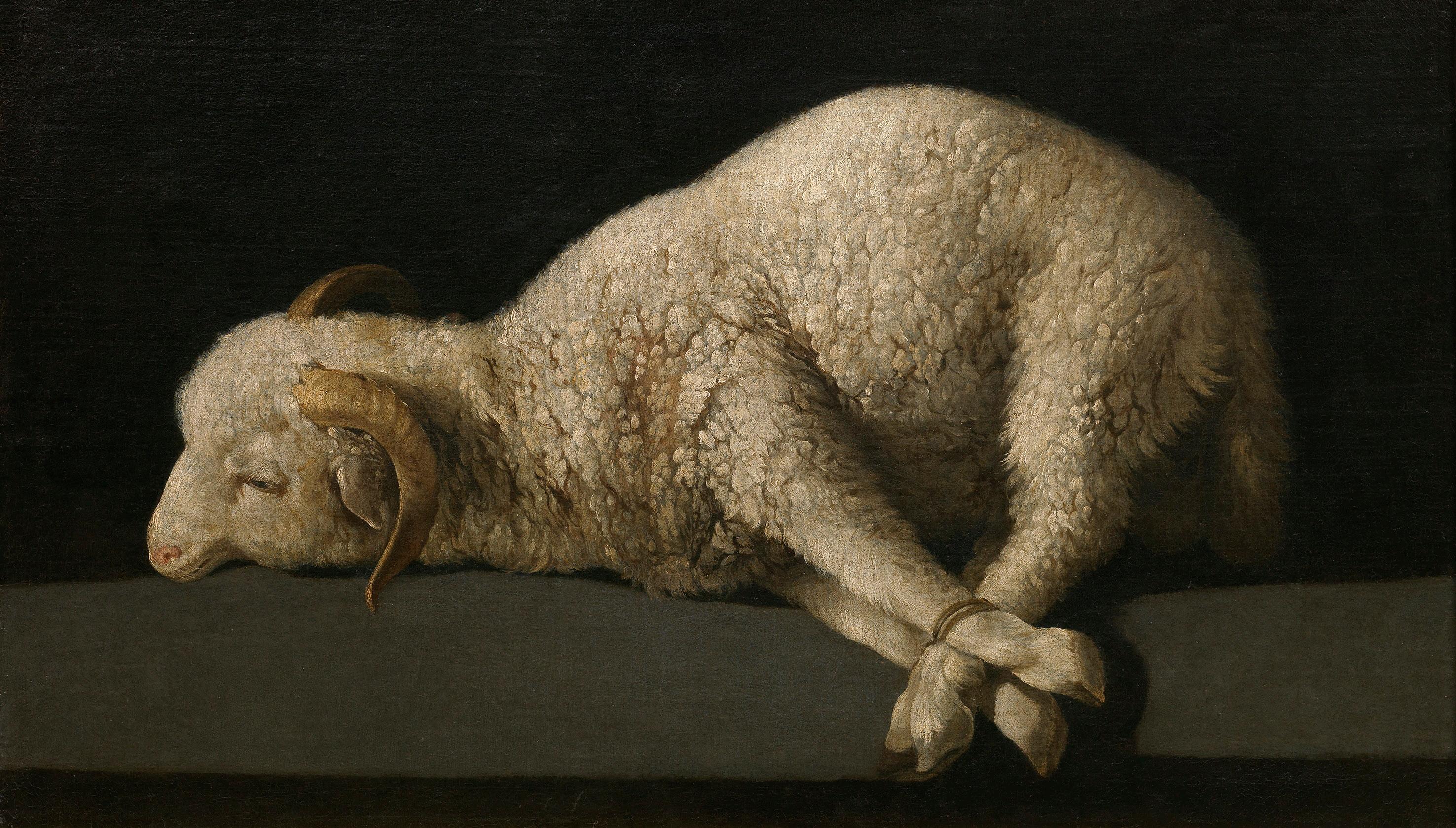
Francisco de Zurbaran. Agnus Dei. 1635-1640. Oil on canvas.
This is the night Jesus says “no greater love has a man than this, than to lay down his life for his friends,” and “love one another as I have loved you.” Yes, we absolutely have to believe in the Real Presence, but the true test of our Eucharistic fidelity isn’t “Do we believe,” it’s “Do we love?”
Good Friday, Feast of Hope
April 18 | Good Friday
At the service for Good Friday, the readings describe how difficult — and how necessary — the virtue of hope is. In the First Reading, Isaiah describe how the Messiah goes to his death: “like a lamb led to the slaughter or a sheep before the shearers, he was silent and opened not his mouth.”
The image is striking, because it could describe the posture of both a hopeful person and a despairing person. The reason the two actions look alike is because real hope is difficult; it is the virtue you have when everything feels wrong, but you go forward anyway, like a child following a trusted guide through a dark forest.
This hard hope is there in all of Sunday’s readings. The Psalm describes how the holy one as “an object of reproach, a laughingstock to my neighbors and dread to my friends,” then says, “But my trust is in you, O Lord.” St. Paul shares a shocking image of Christ’s hope when he says he prayed “with loud cries and tears to the one who was able to save him from death.”
But maybe there is no better exemplar of the hope Jesus teaches than Mary, who we meet in today’s Gospel standing by her son to the end, trusting that the Father has a plan she just can’t see.
Easter Sunday, Feast of Faith
April 20 | Resurrection of the Lord, the Mass of Easter Day
There are many options for Easter Masses and readings, but the theme of them all is faith.
Easter is a very instructive kind of faith, too. Faith doesn’t mean “suspension of disbelief,” and it doesn’t mean, “entertaining the possibility of the transcendent.” Faith is the gift God gives that allows us to adhere
to the truth. And the truth is, at Easter, Jesus’s resurrection isn’t something that only those with faith experience. Rather, Jesus’s resurrection surprised those who believed in him and we consider the resurrection not just a doctrine but a historical fact.
We know from several sources that he truly died, abandoned by his followers, then rose, giving new life to his followers. As St. Paul says, “if Christ has not been raised, your faith is vain.”
A Mighty Mercy
April 27 | Second Sunday of Easter, Divine Mercy Sunday
We see what Divine Mercy looks like at Mass today: In the Gospel, the Apostles receive the sacrament of confession, the First Reading describes early Christian acts of mercy, and the Psalm repeats that “His mercy endures forever.”
But the Second Reading gives the fundamental truth that is the foundation Divine Mercy. St. John describes his encounter with Jesus when he is “Caught up in the spirit on the Lord’s Day.”
The Lord is so overwhelming that “When I caught sight of him, I fell down at his feet as though dead,” John says. Jesus tells him not to be afraid, but then immediately makes it clear why John is so afraid. He declares: “Once I was dead, but now I am alive forever and ever. I hold the keys to death and the netherworld.”
This is the key to Divine Mercy. Jesus has overpowered death and sin, and now has ultimate power over both. The terrifying thing about that is that it is our sin that killed him; the hopeful thing is that he is ready to let bygones be bygones.
Cherish the Gift of Life (continued)
If the technical means facilitates the conjugal act or helps it to reach its natural objectives, it can be morally acceptable. If, on the other hand, the procedure were to replace the conjugal act, it is morally illicit.
Couples experiencing infertility problems can find great consolation in knowing that Natural Family Planning (NFP) can also be used as a very effective, and morally good, way to overcome infertility. NFP helps a couple locate their optimal times of fertility. The daily charting, which is part of NFP, provides the Ob/Gyn with the gynecologic history he needs to diagnose where the deficiencies are in the woman’s fertility. Then these can be corrected by working with nature, instead of replacing it.
NFP-trained Ob/Gyns have a remarkable record of helping couples overcome their infertility. Using natural, and morally good, measures, they are three times as successful as methods of artificial conception, and only a fraction as expensive. The moral approach is always the best approach.
I encourage you to get a copy of Donum Vitae and to study it, along with additional resources we can send you. You will be favorably impressed with the magnificent design God has for us in cooperating with him in the act of continuing creation, which we call procreation. Such a profound privilege demands our full respect. We are never to presume that parents have an absolute right to a child, using any means possible to achieve this. The child, from its very first moment of existence, has an inviolable human dignity that is equal to his parents’ dignity. We are never to abuse that dignity. We are always to stay within the boundaries of God’s designs for human life. We allow God to be God, and we acknowledge our status as his creatures, called to share love and life with other persons.
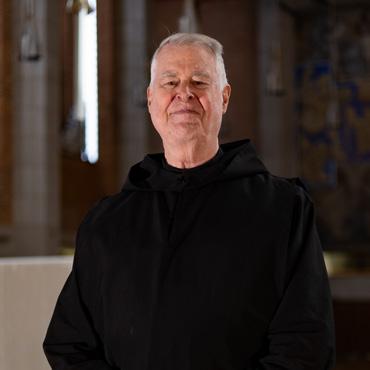
Fr. Matthew Habiger, O.S.B. is a monk of St. Benedict’s Abbey.
The Church values all families who are struggling to conceive, and cherishes the life of every human being, no matter the circumstances of their conception.
We want to help others understand. To learn more about Catholic doctrine on fertility treatments, to find resources for couples planning for families, and to read additional reflections from thought leaders on this subject, please visit www.kansasmonks.org/cherish-life to request that an email with a curated reading and resource list be sent to your inbox.
Join us for the
THE PENTECOST VIGIL
7 TH 2025
Sign up to receive updates at www�kansasmonks �org/pentecost
KANSAS MONKS
editorial team
Editor-in-Chief - Abbot James Albers, O.S.B.
Managing Editor - Seth Galemore
Art Director - Olivia Wieger
Publication Advisors:
Fr. Matthew Habiger, O.S.B.
Br. Timothy McMillan, O.S.B.
Josh Harden
Dwight Stephenson follow @kansasmonks on
donate to support st. benedict’s abbey www.kansasmonks.org/donate
submit your prayer requests www.kansasmonks.org/prayer-requests
To learn more about Catholic doctrine on fertility treatments, find resources for couples planning for families, and read additional reflections from thought leaders on this subject, please visit www.kansasmonks.org/cherish-life
